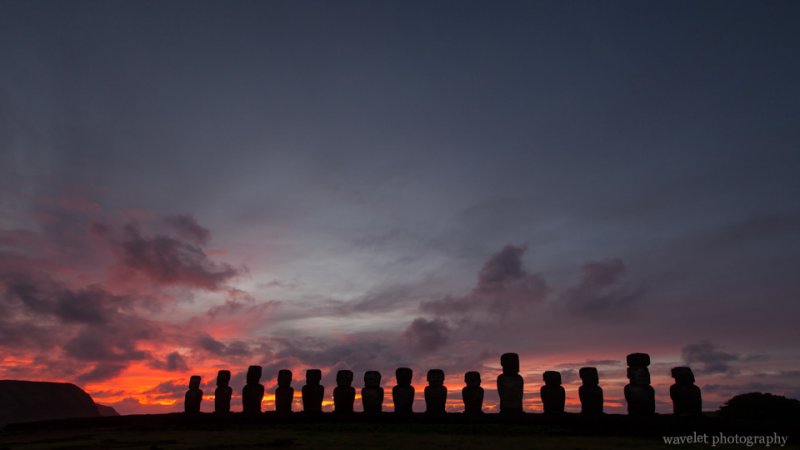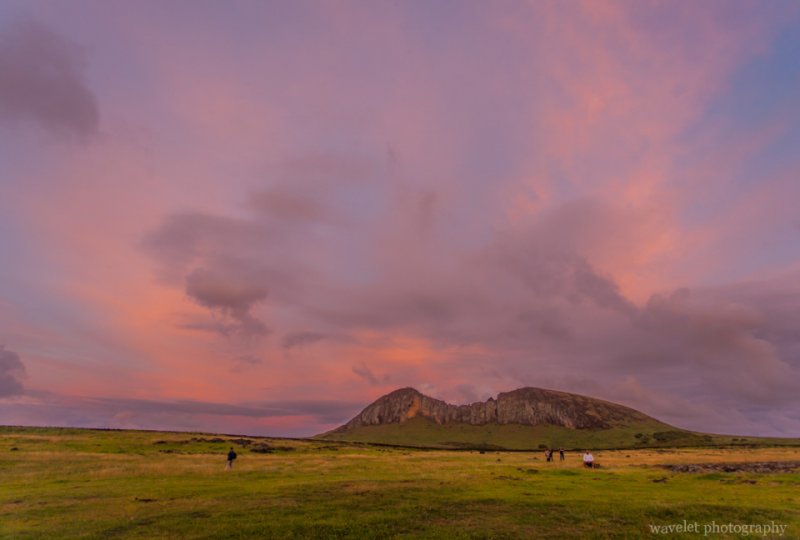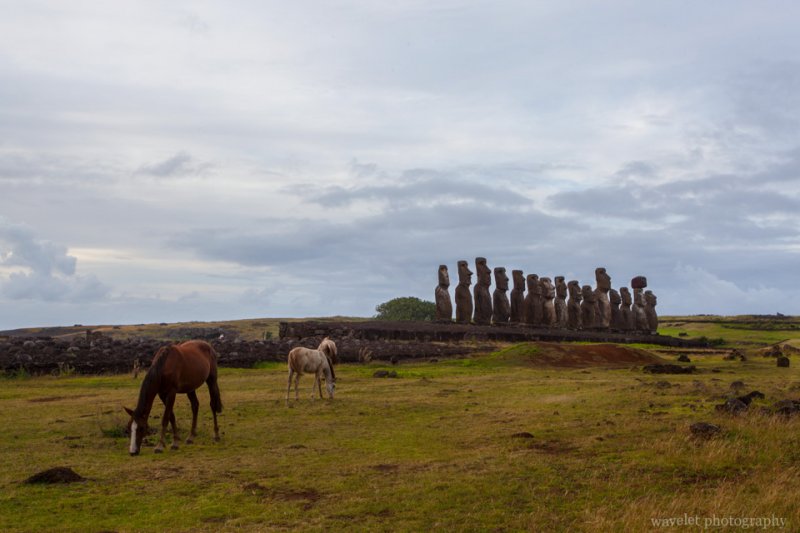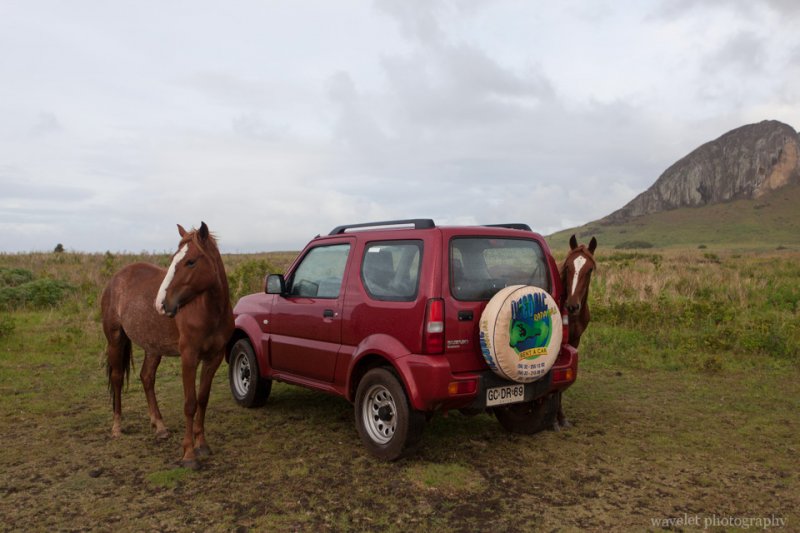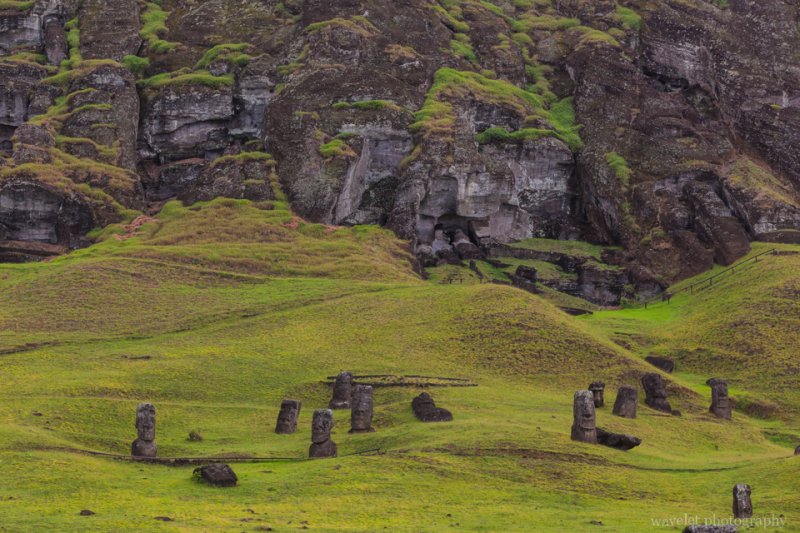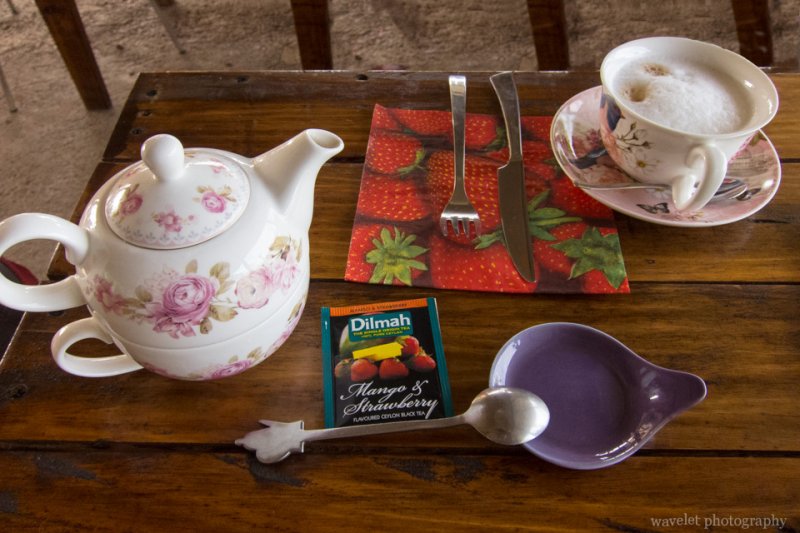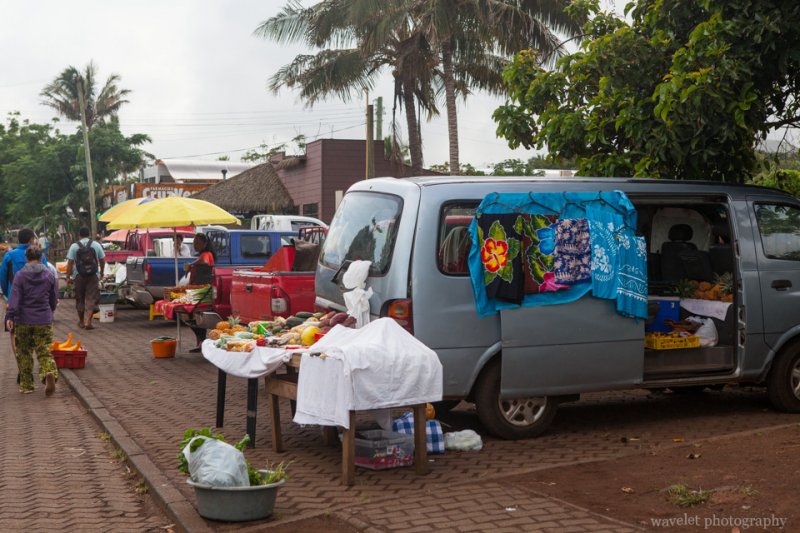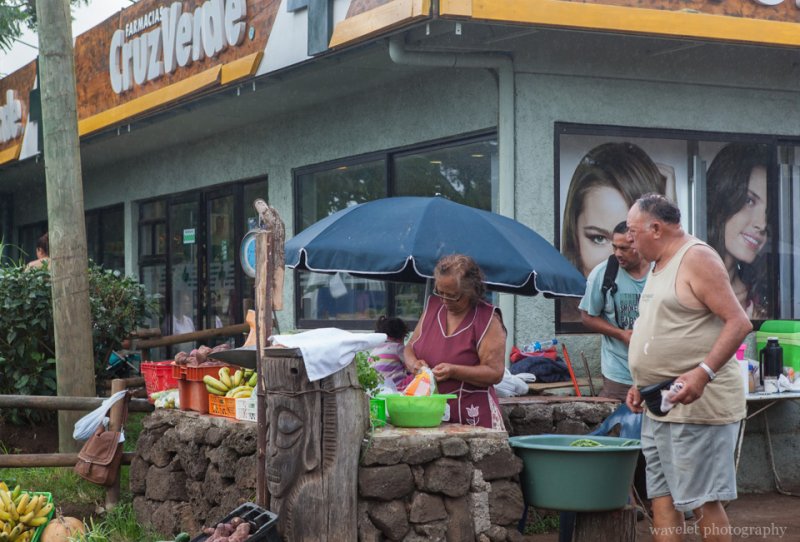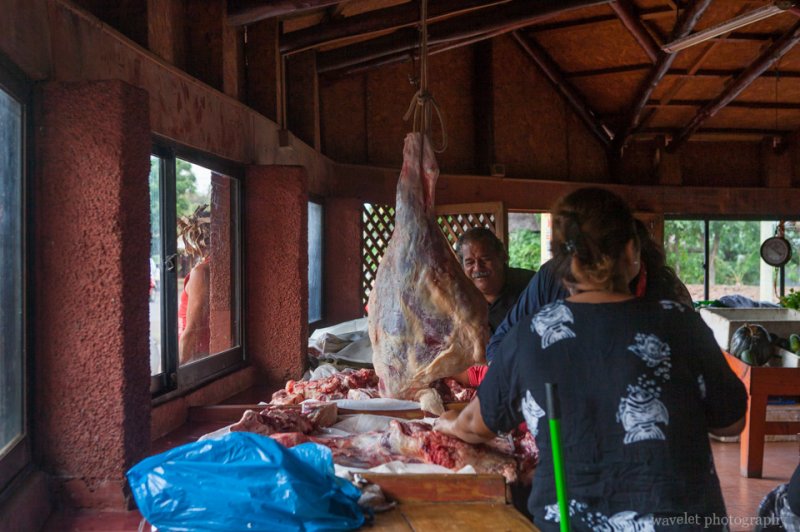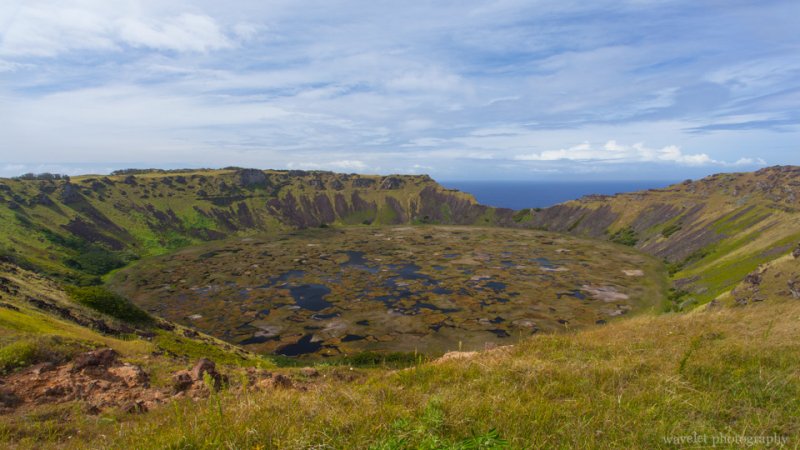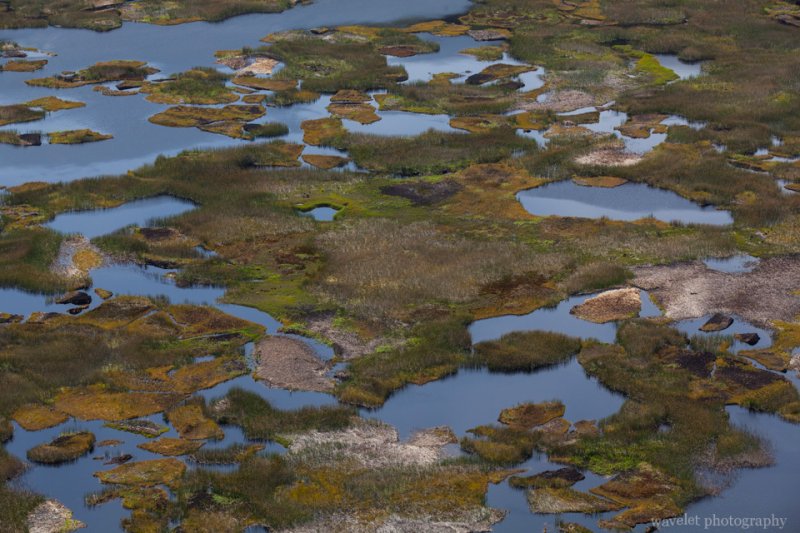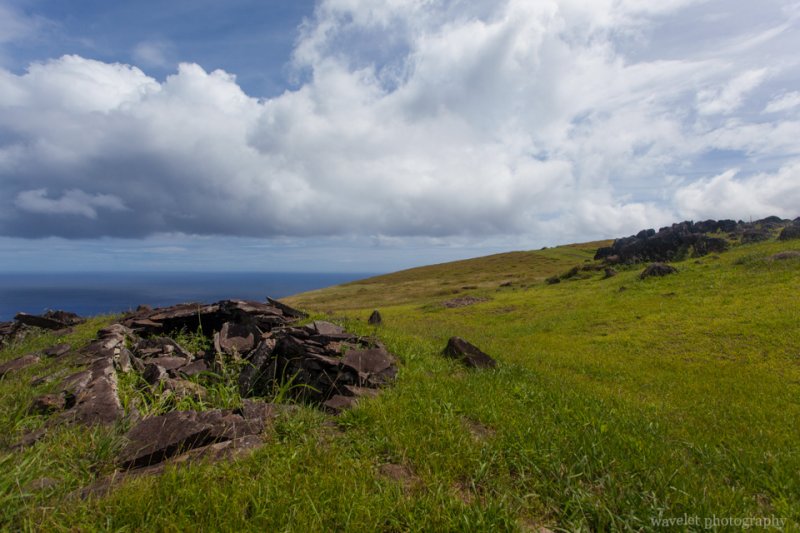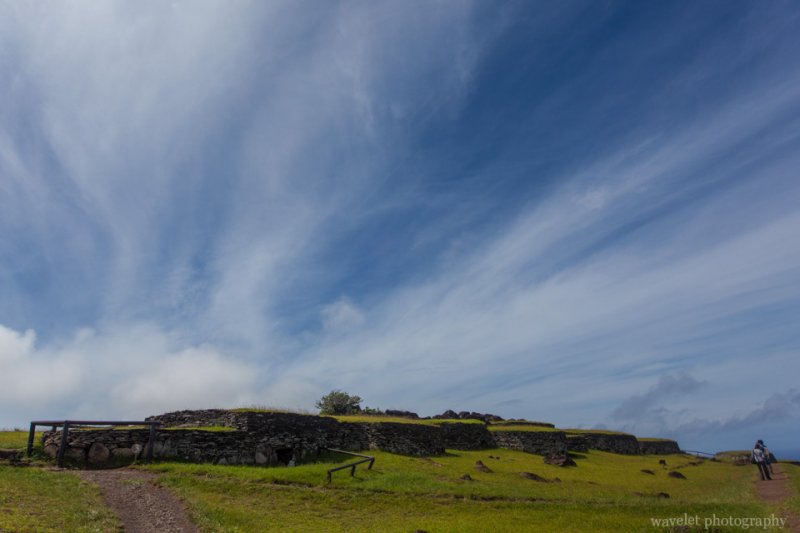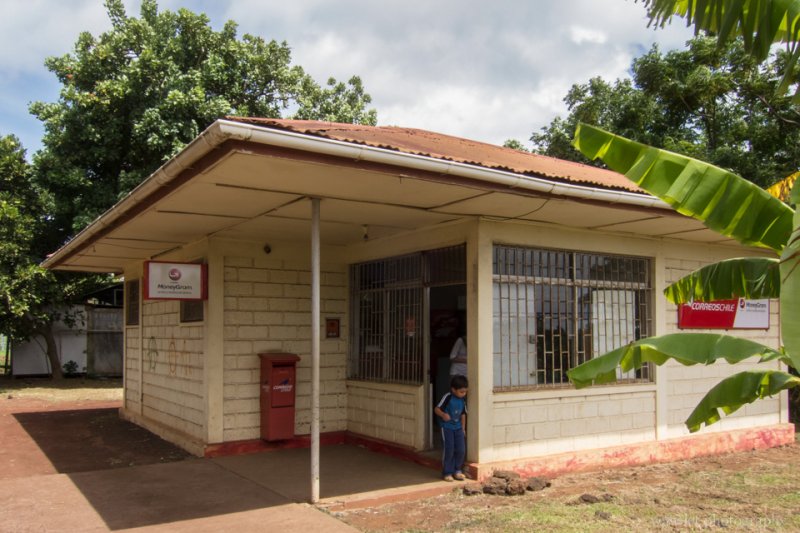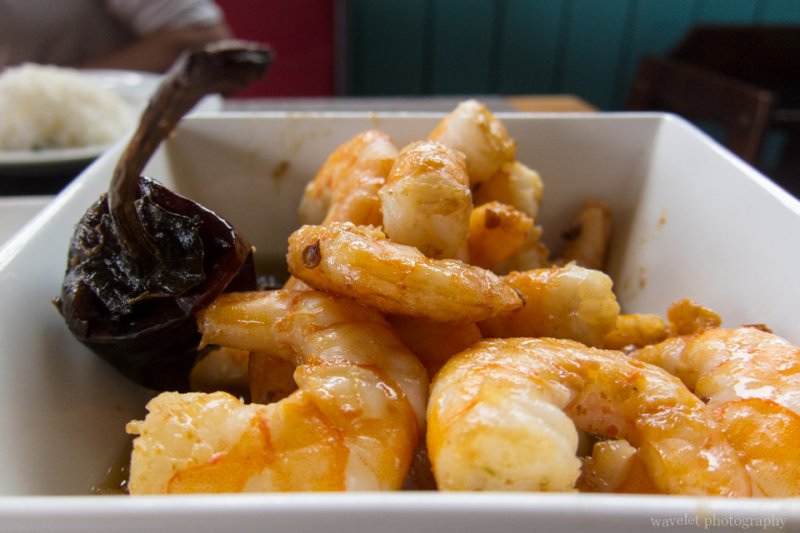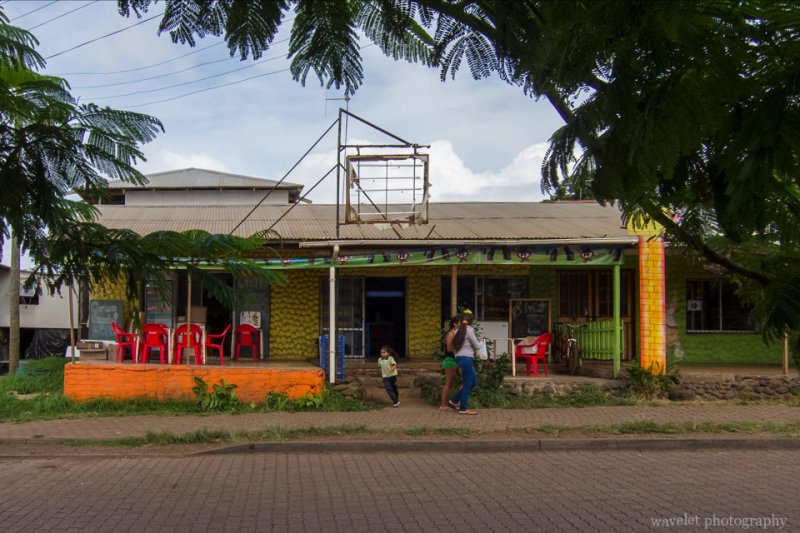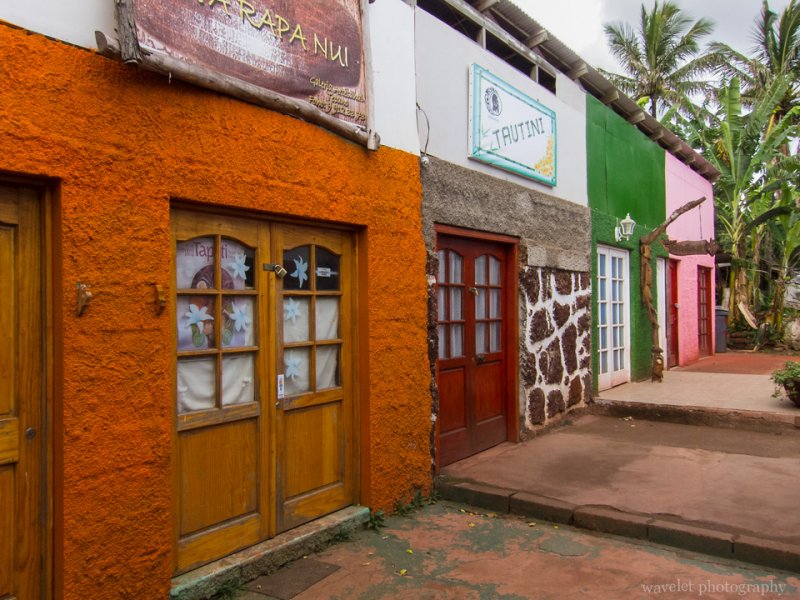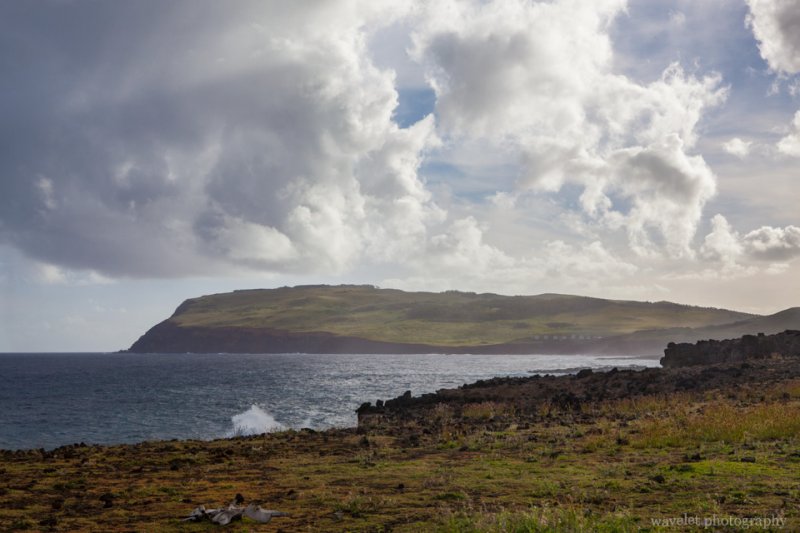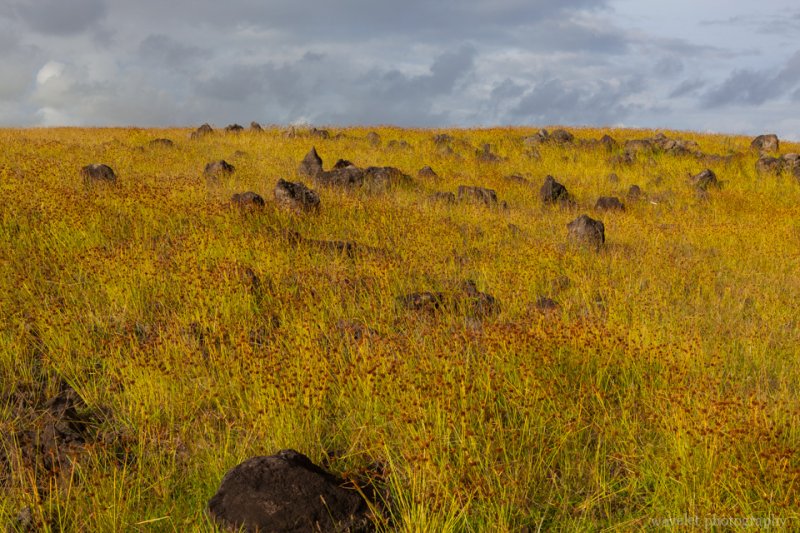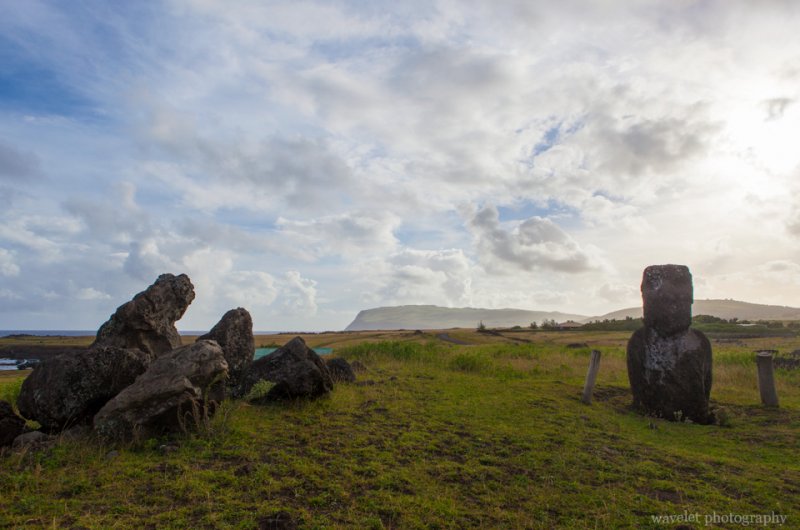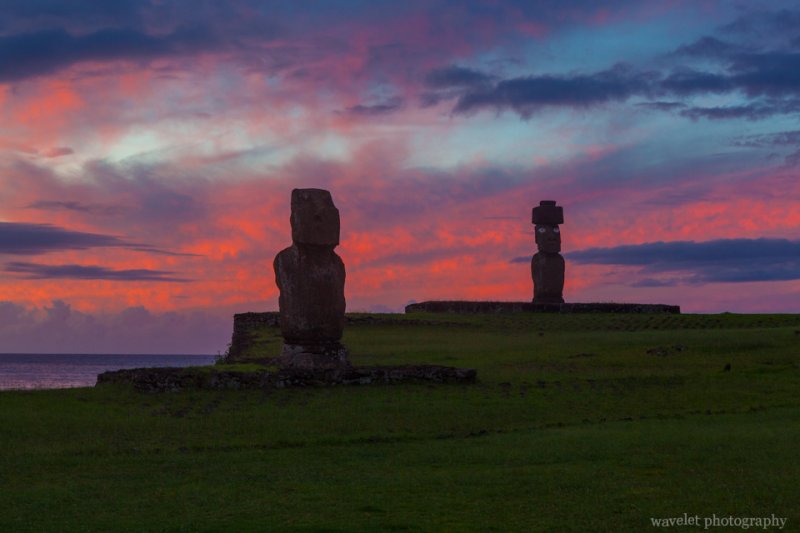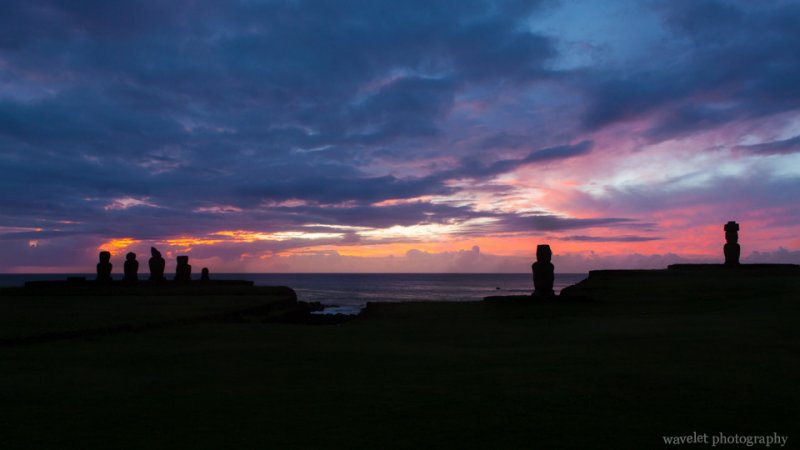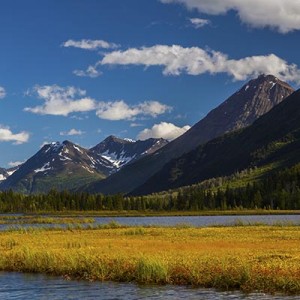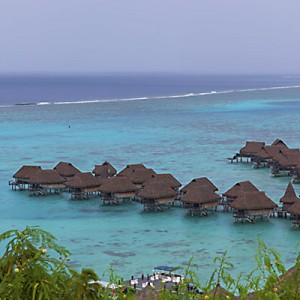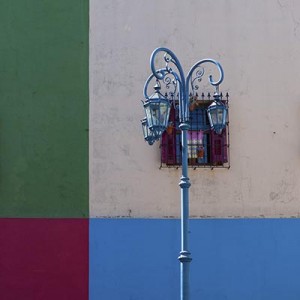2014.3.19Easter Island’s time zone must be set weirdly. The sun rises at 8:30am and sets at 8:30pm. Even consider it’s daylight saving time, I’ve never seen a sunrise in this late hours.
Get up at 6:30am, I was on my way to Ahu Tongariki to see the sunrise. The road winds along the island the southern coast line. I was all by myself on the road. It’s dark with a little fog. I did at one moment feel lonely and a bit of scary. I didn’t driver very fast. For almost an hour, we first saw a sign of Rano Raraku. Drove another 5 minutes, I saw a score of cars parked at the left of the road. This must be it.
Ahu Tongariki is across the road by the ocean. It’s still dark and I had to use the flashlight to see the ground. There were already 20 to 30 people on the site but they were quiet. Watching these moais closely, their face were still yet to be seen, but their size made a grand presence. I couldn’t help feeling amazed standing in front of these huge statues.
As more people were moving in, the horizon started turning red. The sun rose behind Ahu Tongariki over the sea. Ahu Tongariki contains 15 moais. Each one of them has different size and unique facial expression.
The sky was painted in pink color as the sun rose. Where we stood is the ceremonial site of Ahu Tongariki. It’s a largely flat plain between here and Rano Raraku, the original birth place of all moais. The unique shape of the crater provides a nice backdrop of the surrounding landscape.
Unfortunately, the sun didn’t disperse the cloud at the horizon. I was not able to get the signature picture that the sunlight piercing through between statues. As people started leaving after 8:30am, horses moved in. They might be raised by a middle-aged man nearby and later I heard him speaking fluent Japanese with two young girls. The restoration of Ahu Tongariki was originally initiated by a Japan team in 1992.
I returned to my car at 9am. The jeep was surrounded by several horses. One of them seemed to have developed fantasies to the jeep and kept rubbing and pushing against the door.
On my way back, I took a detour to Rano Raraku to check if I could purchase the National Park ticket over there. National Park ticket is required to enter Rano Raraku and Orongo, but is only sold at the airport and Rano Kau. Rano Kau opens at 9am, so you can just come here after watching sunrise at Ahu Tongariki. However, it seems that it’s often cloudy in the morning in this area.
I met my wife at the hotel. We went to have a breakfast at a small cafe next to the hotel by Av. Atamu Tekena. A very friendly dog usually hangs out in the cafe. The cafe serves fresh tea and sandwiches.
We had a short walk around Hanga Roa’s only main street, Av. Atamu Tekena. There is a market along the street every morning. The street used to be called Av. Policapro Toro, which is after a Chilean Naval officer who took Easter Island under Chile’s territory. Now that name was given to the street by the ocean. The main street was renamed to Av. Atamu Tekena in 1998, after a 19th-century Rapa Nui hero. The indigenous Rapa Nui, 1500 people out of total population of 5000, are seeking island’s independence from Chile in recent years. We saw one slogan painted on the wall advocating “decolonization” near the town.
We went to Rano Kau again at about noon. We purchased the National Park ticket at the ranger station. It’s $60 per person for foreigners.
The crater lake is about 1 mile wide on top of Rano Kau. It’s one of only three natural source of fresh water in the island. Standing by its rim, the view is incredible. The lake is 600 feet below the rim and only 10 feet deep. Its surface is covered by cattail plants, similar to the species in the floating islands of Lake Titicaca, which we unfortunately didn’t get chance to go in our Peru trip. I feel the patchy pattern of the plants, especially viewed from the top, is surreal. The outer cliff of the crater is steep. The sea have already started eroding into the wall. There is a gap or “bite” called Kari Kari on the southern rim. One can overlook the deep blue sea through the gap. The nearest inhabited land is more than 1000 miles away.
On the narrow part of the western edge of the crater, the Rapa Nui built the ceremonial village, Orongo, comprised by 54 stone houses and many rock arts sites. Orongo is important in that it marks the turning point of the Rapa Nui’s civilization where the old culture and religion of building huge statues was abandoned, maybe because of the degradation of natural resources in the island, and the emerge of the new birdman cult that worships Make-Make god. This transition took place at the end of the 16th century.
Southwest to Orongo out in the sea, there are three islets, called respectively Motu Nui, Motu Iti and the sea stack Motu Kau Kau in the front. Being the largest of three, Motu Nui is an essential location for the birdman cult. Every spring, people from different tribes gathered at Orongo. The summit of the event is the bird man competition. Representatives from each tribe went down the cliffs, swam to Motu Nui and waited there for days to get the first eggs of Sooty tern, then they swam back and climbed up the cliffs and presented the egg to the judges at Orongo. The last competition took place around 1867.
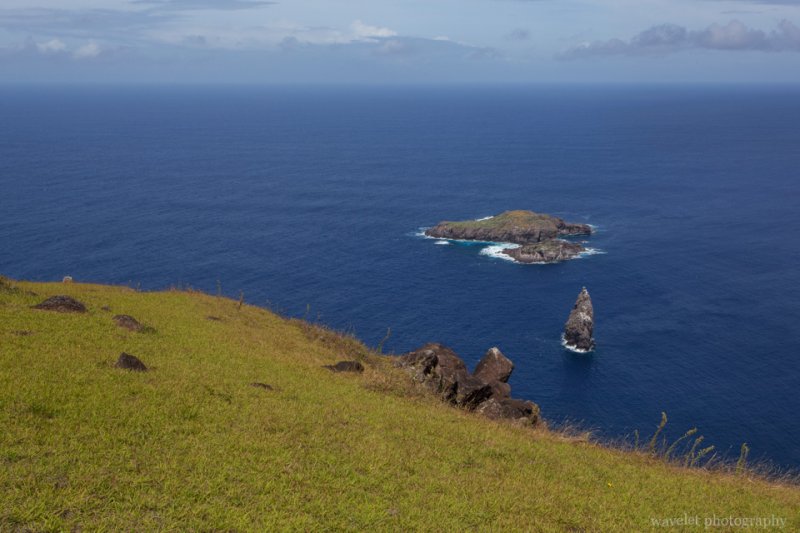
The trail loop around the village. We spent about an hour at Orongo.
Back to the town, it took us sometime to locate the post office. It’s a small, unnoticeable house by the fire station. We got our passport stamped.
We went to the museum at the north end of the town. I had this impression since my childhood, Easter Island is a remote island with a lot of statues built by aliens. The first part is correct, the second part is certainly fantasization. It’s known that all these hundreds of statues were built by the indigenous Rapa Nui between 1200 and 1500. According to the record of first western visitors to the island in 1722, moais were not religious objects, so most scholars believe today they represent the Rapa Nui’s ancestors. What is unknown are exactly why they were built and how they were transported and erected.
What is more interesting to me is that, as an isolated island with human settlement, Easter Island provides a meaningful model to study human society evolution. I can’t help extending the model to the entire human race and its development on the earth. Unfortunately, the outcome is quite pessimistic. Easter Island experienced rapid growth after the initial settlement between 700 to 1100 A.D. (some study indicates that the settlement happened in an even later date.) The population reached 15,000. However, uncontrolled exploitation of the natural resource, partly because of the construction of the huge moai, greatly degraded the environment. Extreme deforestation killed almost every species of trees and land birds, destabilized the already fragile ecosystems. The civil war broke out. Tribes started fighting for the diminishing resources. At the time when the first European came to the island, the population has decreased to 2000 to 3000 within a hundred years.
As the Rapa Nui adapted the new cultures, bird man cult, to deal with their living conditions, the confrontation between old and new civilizations further devastated the island. Disease and slavery brought the native population down to only 100. No one was able to understand the rongorongo script, and oral tradition transferred from one generation to another was disrupted, the island’s cultural knowledge has been lost.
The story is sad, but our trip has to go on. We returned to Restaurant Haka Honu to have our lunch at 3:30pm.
We had some rest at the lodge, then went out bought some bottled water, Agua sin gas, at the grocery store. The price is 700 peso, about $1.2 per bottle.
It’s about 7pm. One hour and half to the sunset, the golden hour for photographing. We drove to the same road to Ahu Tongariki and made several stops at island’s southern coast. There are several ruins of Ahu or small sites of individual moai along the coast. Scholars believes moais were toppled down during the internal war between tribes, but some researches show that this only happened after the encounter of Europeans.
We headed back to Tahai at 8:15pm. Many people sitting on the grass waiting for the sunset. There were good amount of clouds on the horizon to allow the setting sun burned the clouds.
We had the dinner at Au bout du Monde. We found the food to be mediocre.
